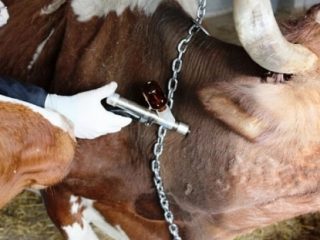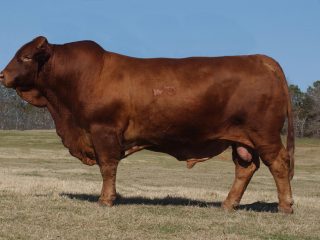Content
Bulls eat soil as a result of a lack of some element in their diet. Most often these are endemic violations, but as a result of improved transport links today, this problem can arise in any region.
Why do bulls eat earth?
Perversion of appetite in any mammal occurs due to a lack of microelements in food. In nature, animals make up for this deficiency with water from rivers that flow from afar. River water, flowing through different regions, is saturated with substances contained in the soil.
Limited in the choice of food and water, livestock compensates for the lack of minerals by eating soil. Clay is the richest in micro- and macroelements. Other types of soil clog the bull's stomach without any benefit.
Eating soil by a bull is a sign of some diseases related to metabolic disorders:
- ketosis;
- osteodystrophy;
- hypocobaltosis;
- hypocuprosis.
“Pure” vitamin deficiencies usually do not lead to appetite distortions.
Ketosis
The most common variant of ketosis is a lack of carbohydrates in the diet of cows and an excess of fats and protein. But the development of the disease can be caused by a chronic lack of a whole complex of chemicals:
- manganese;
- copper;
- zinc;
- cobalt;
- Yoda.
Perversion of appetite is a symptom of a mild form of ketosis, when everything is quite simple to correct. The diagnosis is made after laboratory analysis of blood and urine. Treatment is carried out by adding the missing elements to the feed.

Often a goby eats soil out of boredom or hunger, since there is no grass yet
Osteodystrophy
Disease of adult animals. Calves do not get sick. Osteodystrophy in bulls is usually recorded during the stall period in the absence of exercise and exposure to ultraviolet rays.
The deficiencies in maintenance are superimposed on the winter deficiency of vitamins and chemicals:
- phosphoric acid salts;
- calcium;
- vitamin A;
- cobalt;
- manganese
The development of osteodystrophy is also facilitated by a violation of the ratio of these elements. Provoking factors are excess CO₂ in the room and protein in the diet.
With osteodystrophy, osteoporosis and softening of the bones (osteomalacia) develop. With these diseases, calcium is washed out of the animal’s body, and it develops “licking” or perversion of appetite. A bull released for walking after winter begins to eat the soil, trying to make up for the deficiency of missing micro- and macroelements.
After the diagnosis is established, the animals’ diet is balanced and the necessary mineral and vitamin premixes are added.
Hypocobaltosis
The disease is typical only for certain regions where there is insufficient cobalt in the soil. Hypocobaltosis occurs in areas where the ground is well washed by rain, or in swampy areas. In an attempt to compensate for the cobalt deficiency, livestock eat not only soil, but also other inedible items, including the bones of other animals.
The diagnosis is made taking into account a biochemical blood test and testing the soil, feed and water for the content of the necessary metal.In case of deficiency, animals are prescribed cobalt salts and feed with a high content of this element.

Podzolic soils are typical for northern regions with heavy rainfall
Hycuporosis
Develops in areas poor in copper. With hypocuprosis, the bull eats soil, as it instinctively tries to compensate for the lack of metal in the body. Adult animals are less susceptible to hypocuprosis than young animals. Symptoms of the disease are more noticeable in calves, since copper deficiency primarily affects the development and growth of the calves. Adult cattle are diagnosed based on blood biochemistry.
The disease is chronic and in advanced cases the prognosis is unfavorable. For therapeutic and preventive purposes, copper sulfate is added to bulls' feed.
What to do if bulls eat the ground
First of all, you should donate blood for a biochemical analysis. For some reason, the owners of bulls taken for fattening prefer to make a diagnosis “according to grandma’s principle”: they eat soil, which means there is not enough chalk. Sometimes the “diagnosis” changes to a lack of vitamins. The latter are absent in the soil. And the bull, not receiving the substances it needs in the feed, continues to eat soil.
In small quantities the soil is not dangerous. In any case, cows often swallow it along with plucked plants. But with mineral starvation, bulls eat too much land. They usually do not understand the types of soil; they eat it at the level of instincts. “Grazing” on black soil or sand, the animal will not compensate for the lack of microelements and will continue to eat the soil. The result will be mechanical intestinal obstruction. Clay will also cause harm if the bull eats too much of it.
There is nothing difficult in getting a bull not to eat soil.After receiving the analysis results, a premix with the missing elements is added to the feed. Sometimes it can actually be calcium, but in this case it is better to mix chalk with food rather than give it in its pure form.
Conclusion
Since bulls eat soil when there is a deficiency of elements, the owner’s task is to provide them with a complete diet. Sometimes all you need to do is not be afraid to use ready-made feed specially designed for cattle.








